Fort Wool (Castle Calhoun)
Introduction
Text-to-speech Audio
Images
Fort Wool (Photo by Steven Hart)
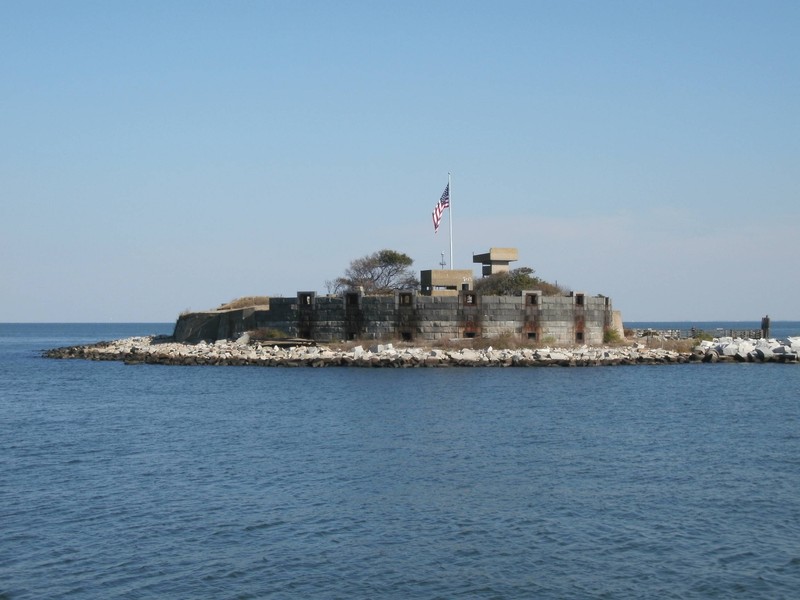
View from Fort Wool of Hampton,Va and Fort Monroe. (Photo by Steve Hart)
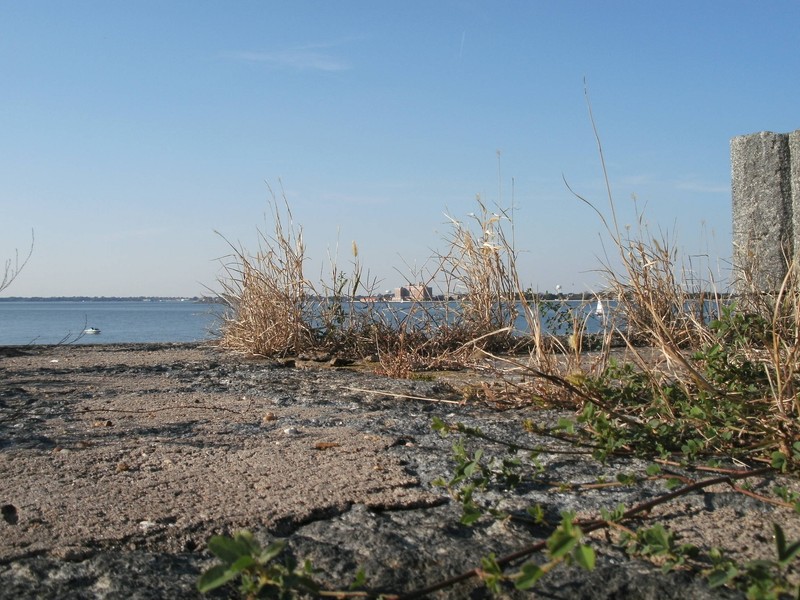
1898 engraving of the experimental Sawyer Rifle cannon installed at Fort Wool during the Civil War. It had a range of 3 miles and participated in the Battle of Hampton Roads, firing on the Confederate ironclad CSS Virginia.
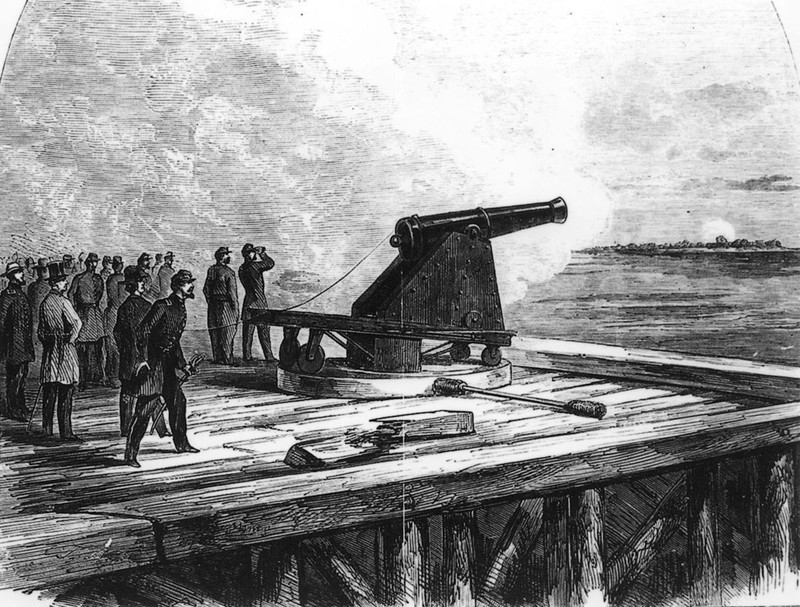
Another contemporary depiction of the Sawyer gun in action.
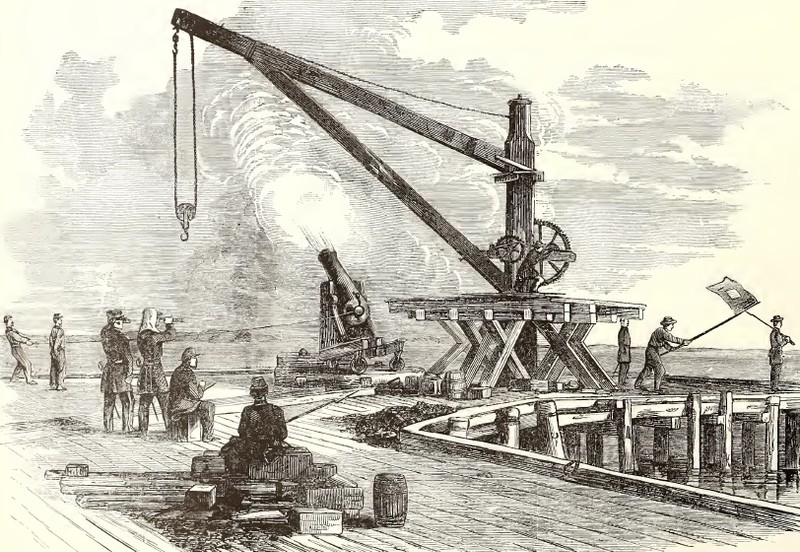
Aerial view of Fort Wool. 1998, Daily Press.
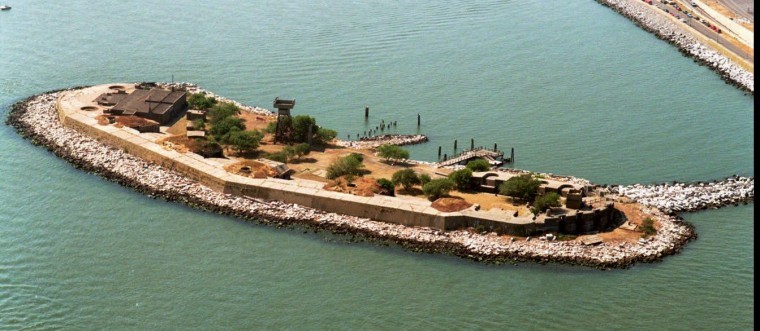
Map of Hampton Roads and Fort Wool (labeled as "Rip Raps," the name of the original reef upon which the artificial island was built. Library of Congress.
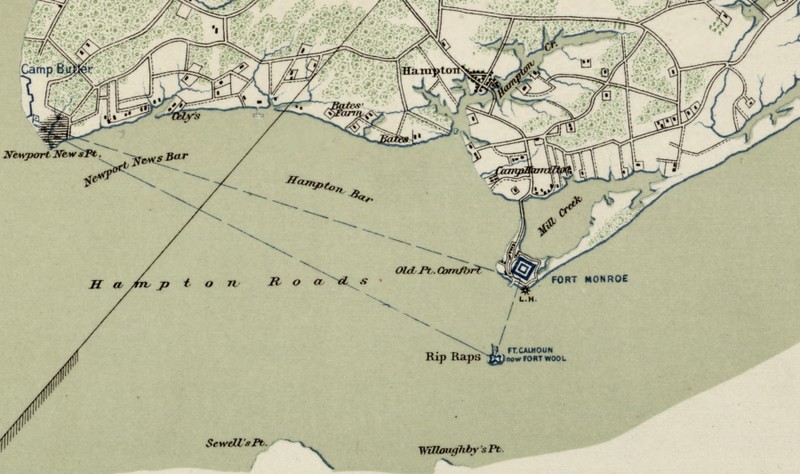
Backstory and Context
Text-to-speech Audio
Originally named Castle Calhoun, construction of Fort Wool started in 1818 but was not completed until 1866. The fort was originally designed to be a three tier castle-like fortress, but even more uniquely the fort was to be a man-made island.
Large rocks were specially cut and placed to build an island at the entrance to Hampton Roads directly across from Fort Monroe, which was also being constructed at the same time. The two forts where designed to provide overlapping fields of cannon-fire, assuring protection from enemy attack and preventing incursions like the British capture of Washington D.C. in 1814. During construction of the second tier, it was discovered that the artificial island was settling and the new fort was sinking with it; the decision was made to cancel work on the third tier. With only the first tier and part of the second completed, a mere 10 of the planned 232 cannon were ever mounted. (1)
Despite its limitations as a defensive installation Fort Calhoun became a favorite retreat of President Andrew Jackson after the death of his wife. Here he spent his days, "inhaling the salubrious ocean breeze, and daily taking the salt water bath." Other presidents followed suit, including President John Tyler.
In the 1830s Robert E. Lee, then a young 2nd Lieutenant in the U.S. Army who was working on Fort Monroe, was sent to Castle Calhoun to assess the situation. Lee found that the base of the island was spreading outward and ordered the existing base to be enlarged, temporarily halting further sinking of the fort.
During the American Civil War, Union forces were able to retain control over the fort despite the nearby presence of Confederate troops and the secession of Virginia from the Union. Soon an experimental cannon, “The Sawyer Gun,” was installed giving the Union garrison the ability to fire on Confederate batteries at Sewells Point in Norfolk, three miles away--an unusually long range for cannon of the era. The Sawyer also fired on the CSS Virginia in the Battle of the Ironclads at Hampton Roads. Less than three months later in May 1862, President Lincoln visited and personally ordered a shelling of Sewells Point before commencing plans to recapture Norfolk and Portsmouth.
Fort Calhoun was shortly thereafter renamed Fort Wool in honor of Maj. Gen John Ellis Wool, who is credited with Norfolk's capture. The original namesake, John C. Calhoun--once President Monroe's Secretary of War--had revealed himself to be a Confederate sympathizer and ardent secessionist.
After the war, Fort Wool remained relatively unfinished and unchanged until 1902 when it was found inadequate to withstand modern firepower. The fort was almost completely torn down and rebuilt to new standards. The facility was rearmed with modern artillery at this time, as the recent Spanish-American War had fueled fears of more conflict with European powers.
World War I necessitated more armament updates and submarine nets were installed between Fort Wool and Fort Monroe. World War II brought searchlights and radar towers. But the fort never again saw action, and the Army decommissioned the site in 1967, turning ownership over to the state of Virginia.
Fort Wool is now operated by the City of Hampton and offers tours during the summer months. The fort is an island, however, and can only be reached by boat. Private boats are welcome to dock at the fort during its normal operating hours. The privately operated Miss Hampton II Harbor Cruises stops at Fort Wool for a 30-minute guided tour.
Sources
4. McCaulay, David. "Civil War anniversary stirs interest in Fort Wool." Daily Press(Hampton, VA), July 04, 2011. http://www.dailypress.com/news/hampton/dp-nws-evg-fort-wool-20110704-story.html
5. Grymes, Charlie. Fort Wool. Virginia Places. Accessed September 05, 2017. http://www.Virginiaplaces.org/military/fortwool.html.
6. Edling, Richard. Fort Wool. Civil War Album. Accessed September 05, 2017. http://www.civilwaralbum.com/misc7/fort_wool1.htm.
